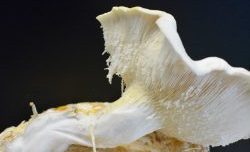Synapse CSIRO Residencies
ANAT’s Synapse CSIRO Residencies were first offered in 2017. The residencies were hosted at the CSIRO’s Advanced Manufacturing hub in Melbourne, and supported by Creative Victoria.
You can read the CSIRO Communication Advisor Ali Green’s blog here.
The 2017 Synapse CSIRO Residency partnerships explored:
 |
3D printed structures Artist Anton Hasell worked with Daniel East and the research team in Lab 22 – 3D Printed Structures, testing new methods of bell production and analysing the frequency array of test castings and direct metal prints in order to create bell profiles that achieve predictable results. CSIRO’s Lab 22 provided access to metal additive manufacturing (3D printing) technologies that promise high efficiency and productivity gains. Watch this video explaining the creation of a 3D-printed sternum. Read Anton’s Synapse CSIRO blog here: http://hasell2017.blog.anat.org.au Image: Anton Hasell casting a difference-tone bell into a 3D print mould. Photo courtesy the artist. |
 |
Metal organic framework materials
Artist Jiann Hughes worked with Xavier Mulet, JJ Richardson and the research team in Metal Organic Frameworks, investigating how such frameworks might cohabit with us, and particularly inside us, influencing our understanding of what it is to be human. Image: Jiann Hughes, 2017, Oyster mushroom with Iron fumerate MOF. Photo courtesy the artist. |
 |
Polymer coatings for biomedical applications
Artist James Geurts worked with Richard Evans and his research team in Biomaterial Interface Chemistry examining connections between prebiotic polymers used in the lab environment and the origins of the primordial properties of the Murchison meteorite. Image: James Geurts, 2017. Seismic Transect (detail),Site work, polaroid film, weather, dust, Murchison region |
The Synapse CSIRO Residencies are supported by the Victorian Government through Creative Victoria.





